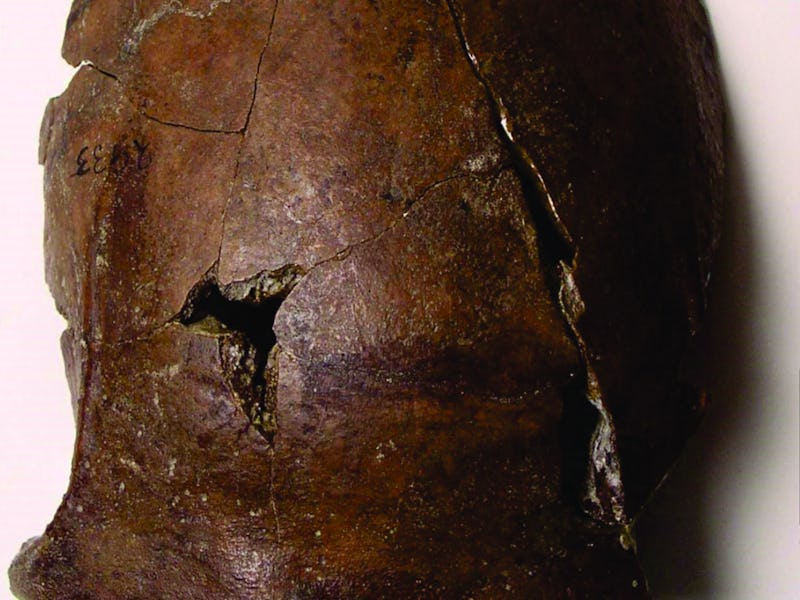Earth's 'Oldest Tsunami Victim' Was Almost Overlooked By Scientists
They once thought he died an unremarkable death.

Tsunamis are a terrible force, the most powerful capable of traveling at 475 miles per hour and surging with a wave height of 100 feet. While these natural disasters, which scientists say will only increase in frequency because of climate change, have devasted humans for thousands of years, there’s a surprising lack of evidence of historical death tolls. One almost-overlooked ancient human skull, however, is changing that.
In a study published Wednesday in PLOS One, an international team of anthropologists claim a 6,000-year-old skull could belong to the oldest-known tsunami victim ever found. The strange thing is that the skull, found near Aitape, Papua New Guinea in 1929, was at first written off as a mostly ordinary ancient skull that once belonged to a man who died rather unremarkably.
Upon reassessment, however, the researchers think he died a much more fearful death.
A map of where the skull was found.
The skull was found in an area that’s thought to have once been a coastal lagoon. Its identification as a likely tsunami victim, says the study author, raises “the question of whether other coast archeological sites with human skeleton remains would benefit from a re-assessment of their geological context.”
When it was found in 1929, scientists inferred it belonged to a Homo erectus specimen that lived in the Pleistocene age — which started 2.6 million years ago and ended about 11,700 years ago — and used it as a reference point in discussions about the origin of humans in Australia. However, more recent radiocarbon dating pegged the skull as much younger, at 6,000 years old. The researchers behind the new PLOS One study analyzed the grain size and composition of the sediments from where the skull was found and discovered the presence of microscopic organisms from the ocean — similar to organisms found in sediments of other tsunami-hit regions.
“With the benefit of knowledge gained from studies of the 1998 tsunami in the same area, we conclude that the skull was laid down in a tsunami deposit and as such may represent the oldest known tsunami victim in the world,” the anthropologists write. They suggest that reassessing other ancient bones found in similar regions may likewise reveal alternative histories.
The new analysis of the skull also indicates that humans increasingly settled in coastal areas of the Pacific during the mid-Holocene era, which in turn increased their risk of exposure to tsunamis. Living along scenic coastal lagoons would have brought advantages to these ancient humans in terms of trade and industry — but the views are only so great until a natural disaster sweeps in.